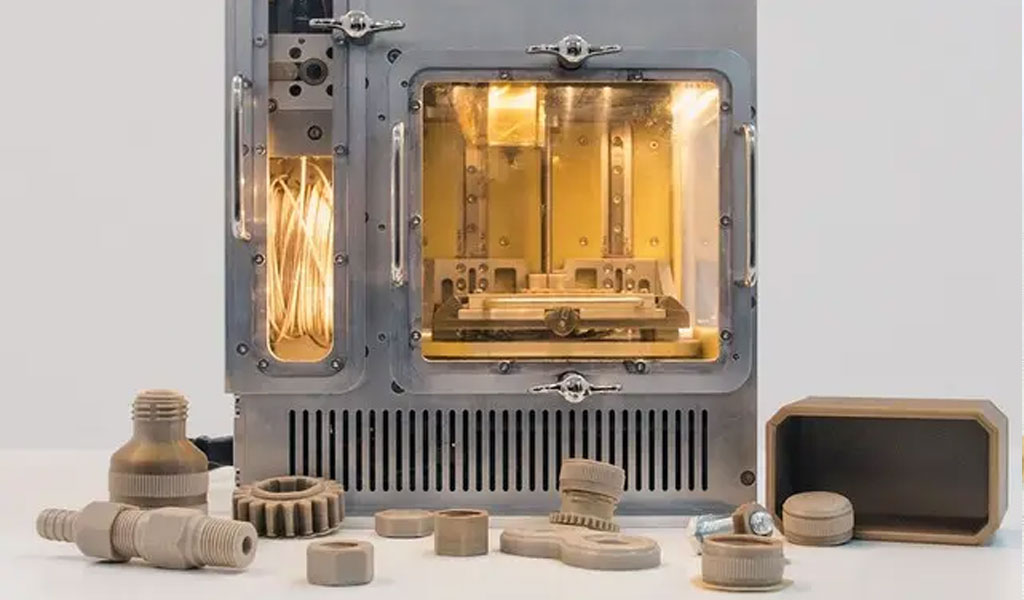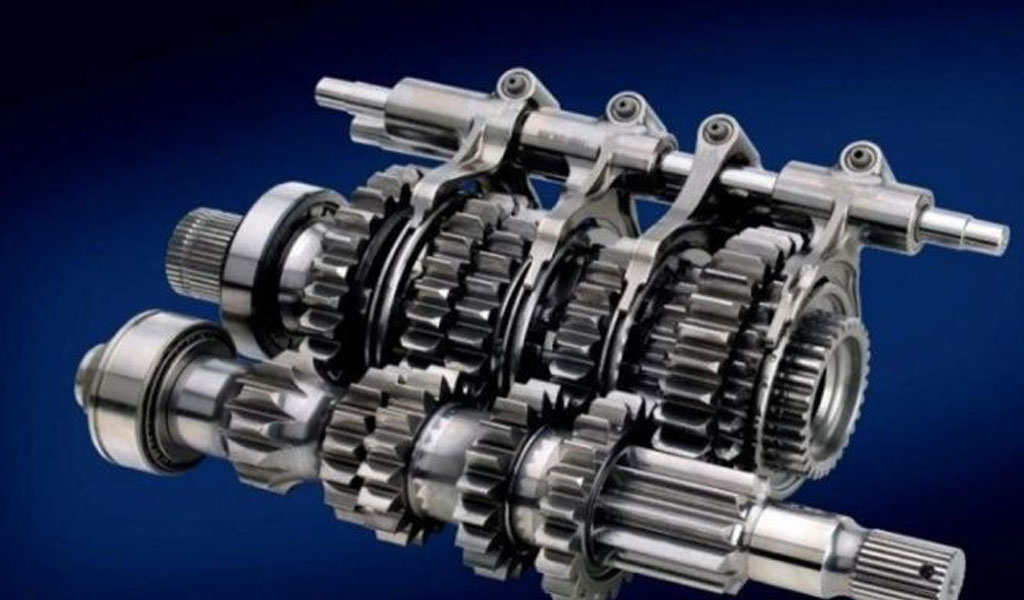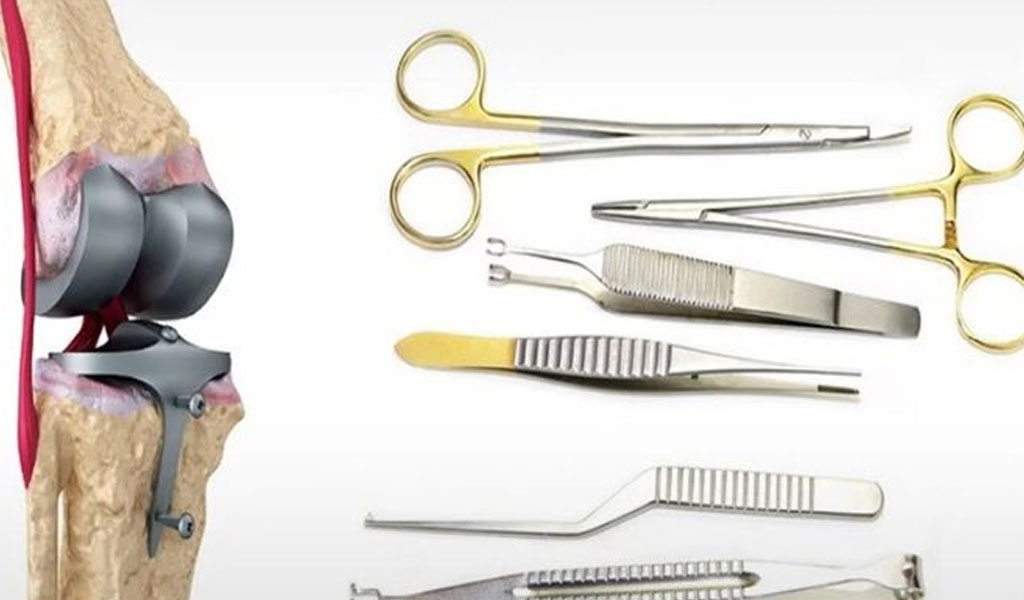PEEK 3D Printing

The Define Of PEEK 3D Printing
PEEK can also be 3D printed and is widely recognized in traditional manufacturing. Learn all about 3D printing with PEEK and PEI.
PEEK is an organic thermoplastic polymer with a variety of mechanical properties, including high temperature performance, mechanical strength and excellent chemical resistance. This makes it a viable material for use with various additive manufacturing (AM) technologies. In traditional manufacturing, PEEK-based components have been adopted by many industries, moving beyond the left and right fields traditionally reserved for metals.
Polyetheretherketone (PEEK) was introduced in the 1980s by Imperial Chemical Industries (ICI) in the United Kingdom. In its basic form, the material is a semi-crystalline, high-purity polymer comprising repeating monomers of two ether groups and one ketone group.
PEEK belongs to the family of polyketone polymers (PAEK) along with other family members such as PEK, PEEKK, PEKK or PEKEKK. However, it outperforms its relatives due to its excellent properties and broad range of use, making it the most widely used of this particular class of polymers.
The Characteristics Of PEEK
PEEK has some compelling features, especially when it comes to producing functional prototypes and parts. Here is an overview of the most important properties:
- Extremely resistant to extreme temperatures up to 260°C (480°F) and corrosive fluids, gases and high pressures
- Insoluble in common solvents, preventing their hydrolysis and can be used without degrading by high pressure water or steam
- Lightweight: PEEK has an inherently low specific gravity of 1.3 g/cm3, less than half that of aluminum and one-sixth that of steel.
- High self-lubricating capacity and low friction
- Excellent creep resistance
- Very little loss
- Good dimensional stability
- Low flammability and low smoke emission when burning
- Excellent insulating properties
- Excellent sterilization resistance at high temperatures
- Fully biocompatible

Some of these resistivity properties can be further enhanced by combining PEEK with composite materials such as fiberglass, graphite, molybdenum disulfide, or carbon reinforcements.
PEEK 3D Printing Services – PEEK Plastic 3D Printing Parts Manufacturer
machiningpeek.com – Pinjin company is a manufacturer and fabricator of custom peek parts and components with peek fast 3d printing services, we own up-to-date production equipment, advanced techniques and professional design and engineering team to support our capabilities for peek plastic 3d printing and ensure the precision additive manufacturing peek parts to meet your requirements and achieve the highest quality, maintain competitive prices at the same time. MJF 3D Printing peek, fdm 3d printing peek, sls 3d printing peek, sla 3d printing peek and engineering services are available, peek and more high specification plastic materials at our disposal.
The Limitations Of PEEK
Unfortunately, like all materials that exist in the field of additive manufacturing, PEEK has some limitations.
- First, it must be processed at very high temperatures. PEEK has a melting point of 343°C (649.4°F.)
- In terms of chemical resistance, PEEK is difficult to resist chlorine/bromide, concentrated sulfur and nitric acid, as well as ketones and nitrobenzene. PEEK is also attacked by halogens and sodium, limiting its use in certain industrial fields.
- In addition, PEEK has very low resistance to UV rays. This problem can be solved by adding a layer of pigment composed of special soot particles. Carbon filled grades offer improved UV stability and can be used in certain applications where higher UV resistance is required.
Overall, the technical advantages and possibilities go far beyond the limitations of the material, opening up a wide range of applications where PEEK-based objects and parts can be used and even replace common materials such as metals or aluminium.
The Common Applications Of PEEK 3D Printing
Due to its attractive properties, PEEK has been widely used in industries such as automotive, aerospace, medical and electrical engineering. Let’s take a closer look at some applications.
The aerospace industry requires safe and reliable materials. PEEK maintains its excellent material properties even when exposed to high temperatures and corrosive fuels. Also, PEEK’s fluoroplastic has a low coefficient of friction, making it suitable for processing in tight spaces.
The use of PEEK-based parts in aerospace starts with external parts because of their excellent resistance to rain erosion. As well as indoor use, it reduces the risk of fire due to its low smoke and toxic gas emissions and inherited flame retardancy.
Overall, PEEK is replacing more and more aluminum and metal parts in aircraft. Such as clips, high pressure hoses or electrical conduits. This saves up to 70% of weight and drastically reduces fuel costs. For example, reducing aircraft weight by just 45kg in a fleet of 500 aircraft can save up to $5 million in annual fuel costs.

3D Printing PEEK For Automobile Industry
PEEK has excellent fatigue and chemical resistance properties, so it can be used in automotive fuel management systems.
Due to its light weight, it is replacing various reactive metal or aluminum components used in transmissions, braking and air conditioning systems.This can include piston units, seals, gaskets or bearings, reducing weight and noise significantly.
Additionally, 3D printing custom parts for older cameras is a rapidly growing industry. They can cost up to 90% less than the original parts, that is, even if they are still usable or made “the old fashioned way”.

3D Printing PEEK For Medical Industry
In the medical field, PEEK also offers cost-effective innovative parts with excellent wear, heat, electrical and chemical resistance. Its applications in healthcare mainly include dental instruments, endoscopes, dialysis machines, and most are used in orthopaedics. PEEK (especially when 3D printed), while much lighter than aluminum, can provide greater accuracy for anatomically correct prostheses or implants tailored to each user’s needs. While still in baby shoes, this segment has amazing growth potential.In dental medicine, for example, PEEK is used to replace metal handles on dental syringes or sterile boxes for root canal files. PEEK is suitable here because the polymer can withstand up to 3000 autoclave sterilization cycles (usually at 130°C) and maintains excellent mechanical strength and durability in hot water, steam, solvents or chemicals Hydrolytic stability.
The FQA Of PEEK 3D Printing
Why PEEK is the most potential 3D printing material? To fully understand PEEK, master the existing 3d printing china market of PEEK, and understand the future opportunities of PEEK, Pinjin will ask some questions that everyone is concerned about in the question and answer session of more PEEK materials and 3D printing, and David Lan, co-founder of 3D-PRINTING-CHINA.COM, answered.
This is a topic that many people pay attention to. We found that some of the needs of localization in the current international environment have been repeatedly mentioned. Whether it is materials, equipment or software, materials from the level of raw materials are now fully qualified to do independent work in China. research and development, independent aggregation, independent improvement and other links. In the field of 3D printing equipment, there are also several excellent domestic manufacturers who have been working hard on various plastics and high-performance materials, constantly making breakthroughs, and constantly implementing some application scenarios. I think everyone can The environment and soil for 3D printing with special functional plastics have been cultivated in China, and the materials and hardware can be localized.
In terms of performance, PEEK material is of course a special functional plastic with excellent comprehensive performance. From the perspective of 3D printing, its main disadvantage is that the cost will be relatively high, and the 3D printing process is not completely mature. The advantage of 3D printing is flexibility, but also because flexibility may lead to differences in the performance of different parts printed. The uniformity of performance and stability are still lacking from the perspective of 3D printing, as well as cost.
In the application of PEEK 3D printing, the current price of PEEK material wire is still relatively high. In fact, this application has not been fully developed, and its usage is not particularly large. Different material manufacturers and equipment manufacturers are developing PEEK in the early stage. Materials, PEEK wire need to pay a relatively large price. At the beginning of the early stage, there was no domestic manufacturer that could process PEEK wire, and they were all bought from outside through imports. Slowly, some domestic manufacturers are also making some breakthroughs. This breakthrough has failed many times before, including when extruding the wire, the stability, whether there are black spots, whether the color is not uniform, and the crystal state is not uniform, which will also lead to a lot of problems. The bad frequency has gradually stabilized now, and I think its cost should be reduced to a certain extent in the next two or three years.
In the field of PEEK material 3D printing, if you do a score, it should be in a state of seventy or eighty. I think there is still a lot of work to be done for major equipment manufacturers and major material manufacturers. A better state is that we have found that many equipment manufacturers and material manufacturers have some alliances and can solve these problems together. , which can provide a better and more complete solution to the terminal application. Under most application conditions, the current PEEK material 3D printing can solve a need of many people. Because they are choosing a material, such as high temperature resistance, when you use it at a temperature of more than 200 degrees, its selectivity is already very small, and there are only a few materials to choose. Those kinds of materials can be seen from the ease of processing. Among similar materials like PEEK, it is relatively excellent. Compared with PEI and PPSU, PEEK is easier to process, and it is successful. The rate will be a little higher, and the yield will be a little higher.
After we entered the field of PEEK 3D printing in recent years, many hospitals, medical device manufacturers, terminals and patients have consulted for help. At present, we do not have three types of certificates. I believe that no domestic manufacturers of 3D printing PEEK materials can obtain them, and 3D printing titanium alloys have already been obtained. Compared with titanium alloy, PEEK is lighter than titanium alloy, and its elastic modulus is very close to that of bone; another is that the thermal conductivity of metal will be stronger, and you will obviously feel some of the temperature changes such as spring, summer, autumn and winter. Discomfort, this is a relatively clear physical characteristic. In the past few years, we have done some clinical trials in conjunction with some hospitals through some scientific research and patient consultation, and began to enter into some relatively simple exploration and development from first-class, second-class, to third-class. In PEEK materials, we have gradually signed some cooperation agreements with some universities and hospitals, and have also taken some scientific research projects in progress. In this way, we will also supplement the first-class certificate, and we will also add the second-class certificate if conditions permit. , the follow-up medical application direction is good, we will also consider doing three categories. If there are partners who contact us to cooperate, they can also do the second and third categories, it depends on what kind of cooperation it is.
[/toggle]
At present, I think there are some domestic manufacturers that provide PEEK Machining services. They use foreign machines such as Stratasys machines to process PEKK and PEI materials. They can also achieve a good success and a good output value. From the perspective of the demand for localization, in some fields such as aerospace, the military industry will gradually be localized. Therefore, in the field of localization, PEI materials may not be in our domestic chemical material manufacturers because of incomplete intellectual property rights. If we explore the localization of 3D printing and the localization of non-metals in the field of military industry and aerospace, I think there will be a great prospect in this area. Because we have seen that the demand for localization of metal 3D printing has been very strong in recent years. But an application of non-metals in aerospace and military industry, I think it has not been fully developed.
[/toggle]
Fluidity is the material itself. When it produces this material and aggregates this material, it determines the fluidity of this material, so we need to modify it to change its own fluidity.
From the analysis of 3D printing, it is filament printing and pellet printing. At present, we do have particle printing machines that are very large. We have actually fantasized about this kind of pellets, because pellets usually cannot be made into small parts. Because its detailed features are difficult to show, its nozzle is relatively large, and the extrusion is relatively less stable. So it is suitable for making some relatively large parts, such as some aerospace companies or some relatively large parts in the military industry, we can imagine that it is some specific applications in rockets. It is also possible to use particles to print out, and then to cooperate with a subtractive processing method, it can also be used for a specific application. The versatility of the wire will be higher, whether it is large or small, it can be processed with PEEK of the wire. However, its time efficiency is relatively lower than that of pellets, and from the perspective of cost and economic benefits, PEEK pellets are of course much better than PEEK wires.
Now we can see that some brands of some international or domestic manufacturers are now more and more subdivided. If you contact these manufacturers, they will also tell you which raw materials can be used for 3D printing.
This is a disadvantage of PEEK 3D printing. When we form layer by layer, its performance will be relatively weak in the direction of Z-axis height. What do we usually do? Now they have some methods of multi-axis machining on the hardware. If there is no multi-axis machining method, they will try their best to optimize it in terms of materials and technology. In fact, for example, if the theoretical tensile performance of our PEEK is 100 MPa, the X and Y axes can be stabilized at a maximum of about 80% to 90%, and the Z axis can be optimized to more than 40%. If 40 MPa performance can satisfy you, such as thermodynamic performance, then 40 MPa is ok, then this can meet your specific needs.
We are now mainly optimizing several temperature conditions on the hardware, so that they are stable and can reach the temperature we need. We have done some functional development. For example, we will also develop some international advanced functions or use them to match them. In terms of material technology, we actually did a lot of repeated and single-variable tests, a bit like the experiments we did in the university. We only changed one parameter to test continuously, and tested on our different models. its specific properties. In this way, you can judge under which conditions the analysis comes out. For example, if the printing temperature is 440 degrees Celsius, what is the cavity temperature? What is the heat transfer temperature? What is the speed? Can’t turn on the fan? How much is the material pre-dried? In fact, there will be a more specific suggestion to the user. These are actually what you need to do as an equipment manufacturer to provide solutions.
In fact, this is also the grasp of the process. If we divide the temperature into multiple steps for annealing, it is different from doing annealing at once. For example, for a long strip, if you directly raise it from room temperature to its crystallization temperature, it will definitely generate huge stress, causing it to shrink and deform. But if you match it according to the steps, different temperatures, different times, and then slowly match, you can almost control the shrinkage and stress of the part to be very small.
In fact, we have also done thin-walled parts, and some users have sent them to us to print them. From the early stage, the printing is not particularly ideal, and then slowly do some test optimization and improve the process parameters. Thin-walled parts, such as its length, its diameter, and its wall thickness are about how much, the current software already has some variable line width settings, that is, according to some thin-walled line widths, we will also have some adjustments. , which is an important point. The second key point is the combination of temperature and speed. If the thin-walled parts are small, you may not cool enough, that is, the cooling is not timely and the model printing is problematic. In such conditions, you may find ways to create cooling conditions. If the thin-walled parts are very thin and large, this is that your cavity temperature must be very stable to ensure that the deformation energy is small.